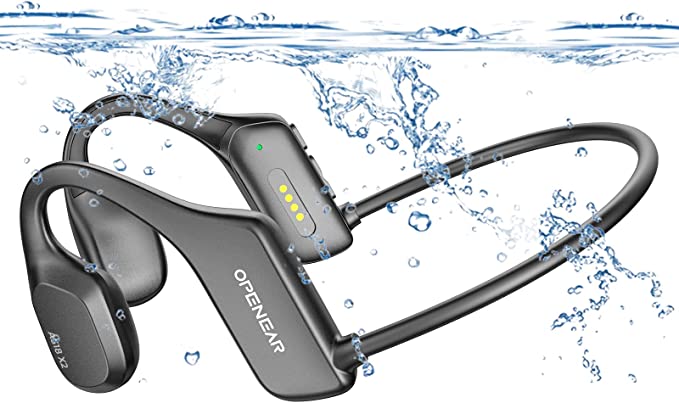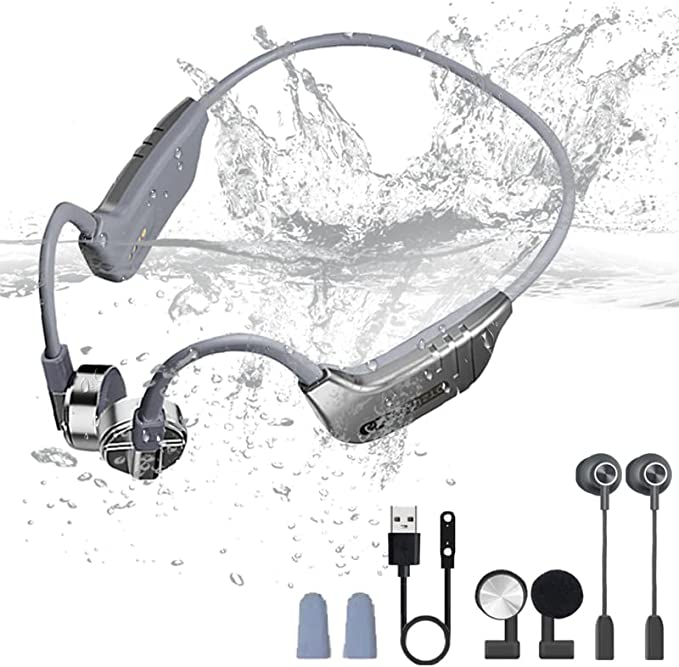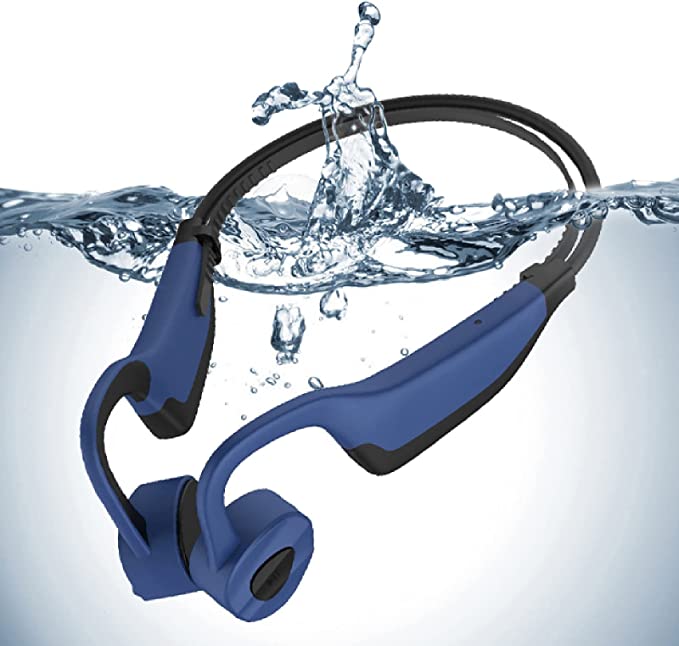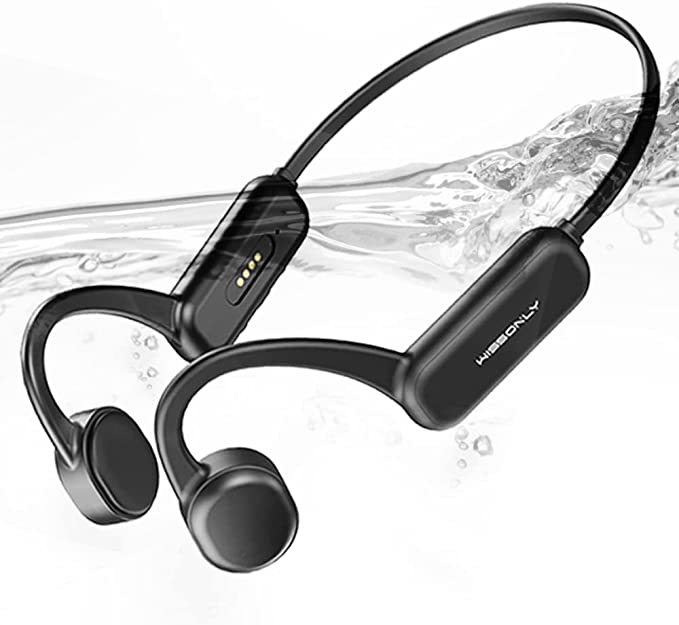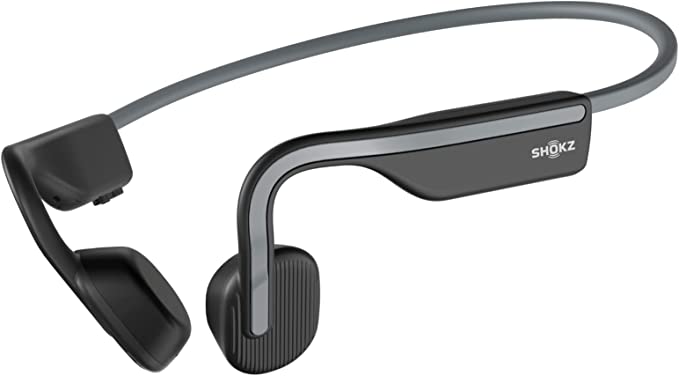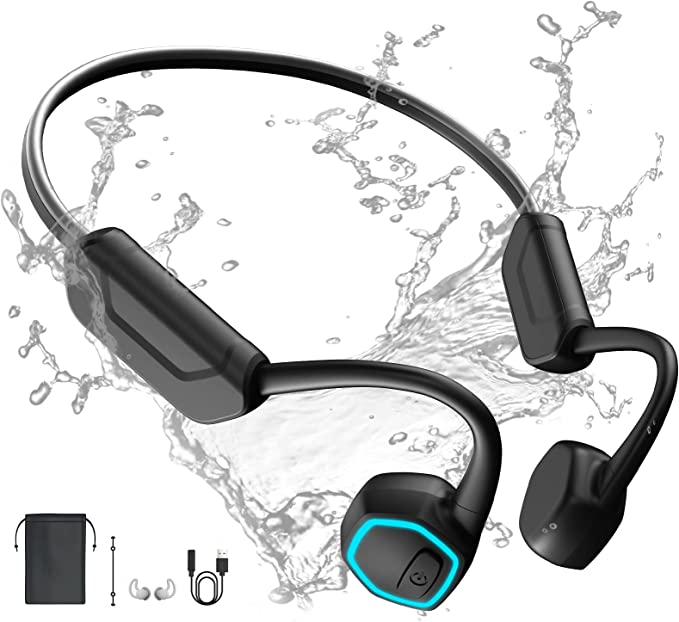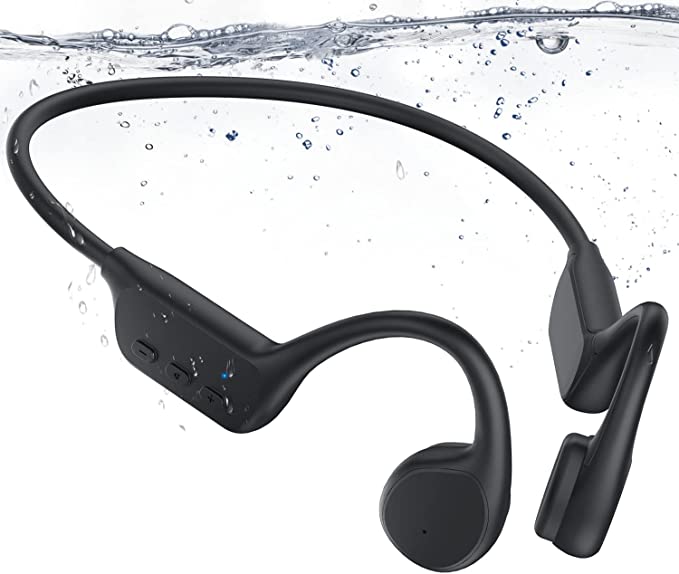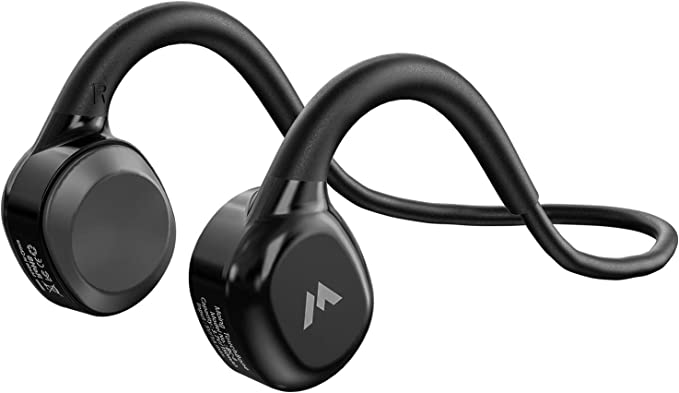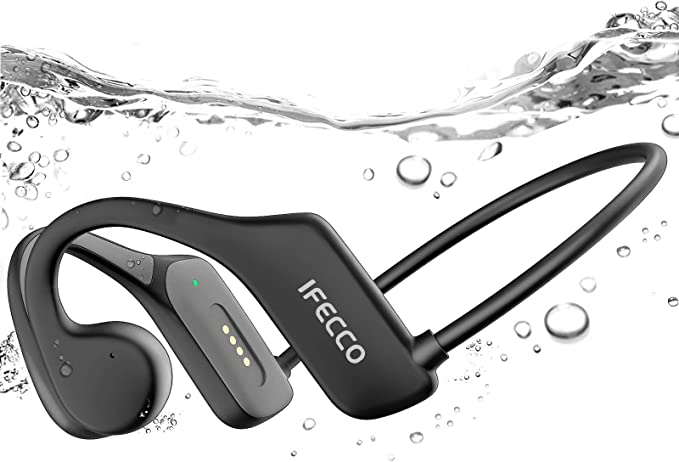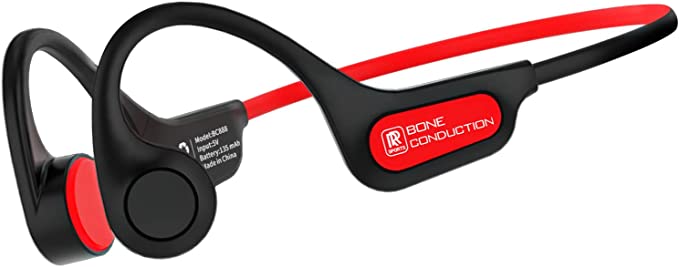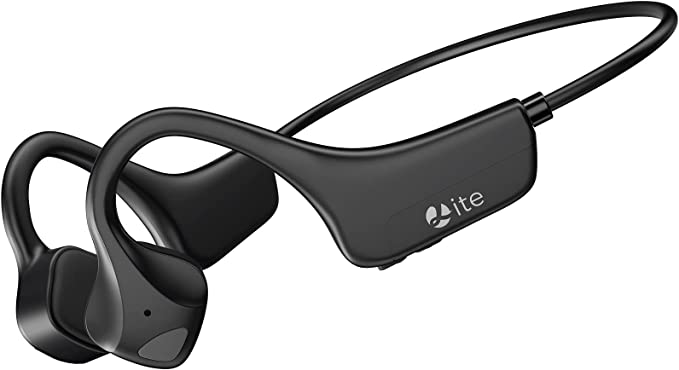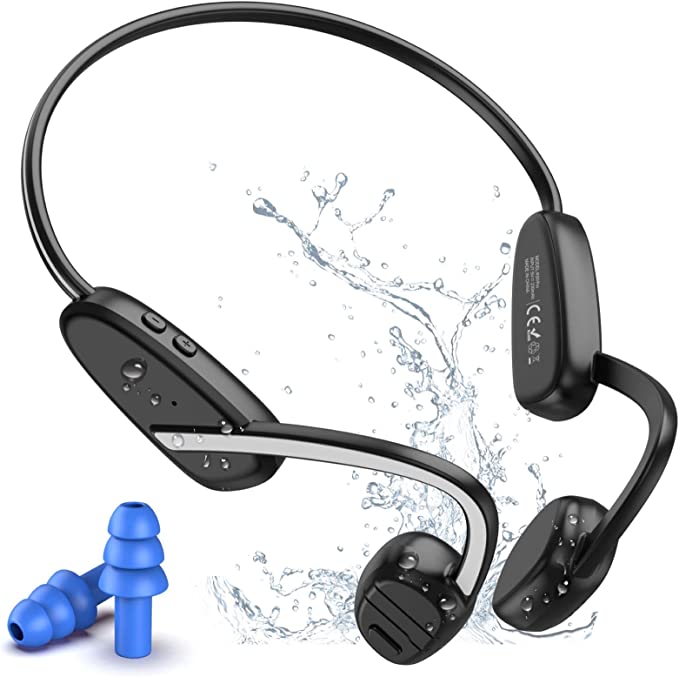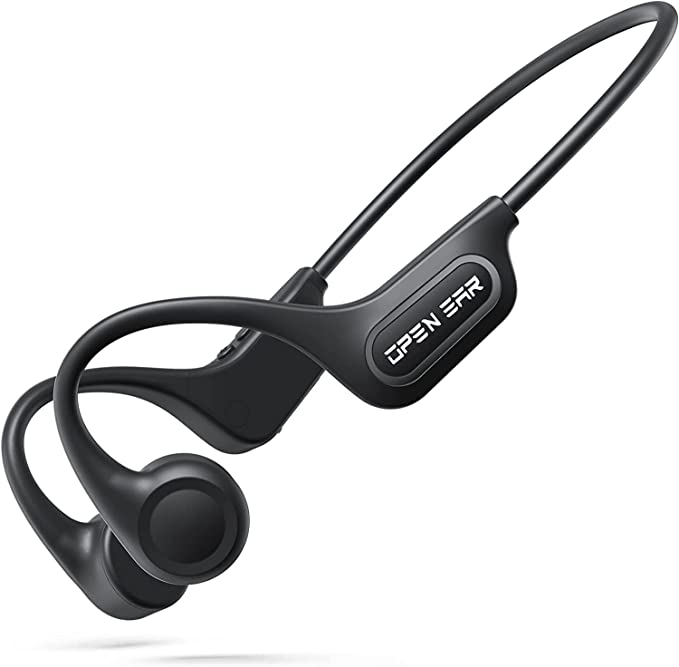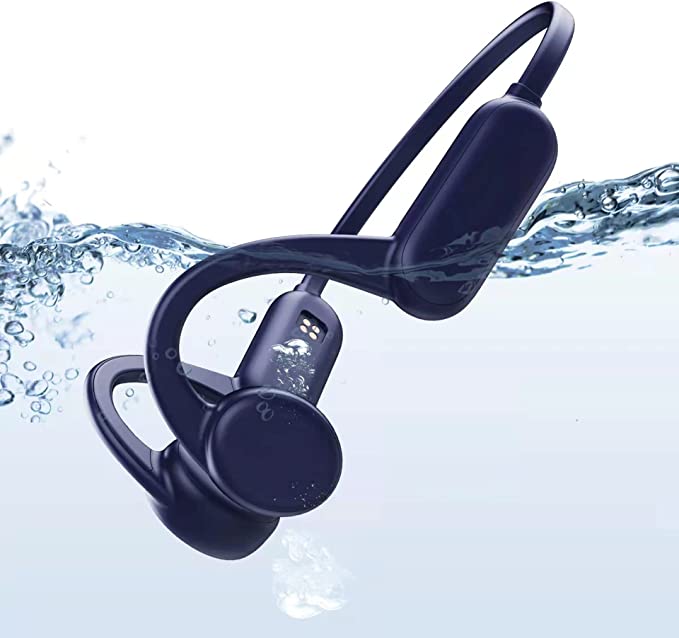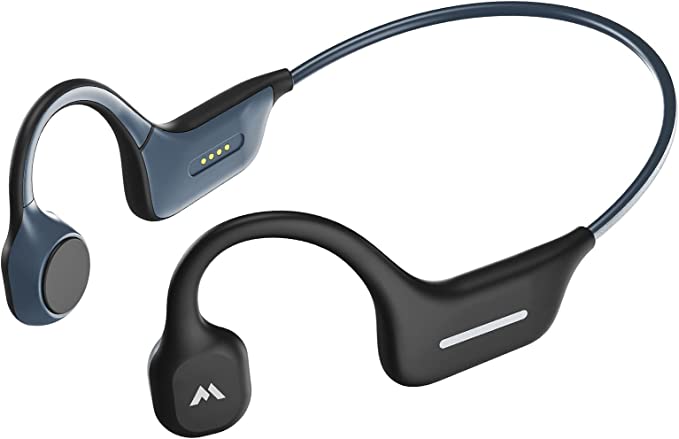GEORDONG k9 Bone Conduction Headphones: Open-Ear Bluetooth for Swimming and Sports
Update on June 29, 2025, 8:28 a.m.
On paper, the GEORDONG k9 Bone Conduction Headphones seem like a marvel of sports technology. They promise the freedom of wireless audio, the magic of hearing without blocking your ears, a cavernous 16GB of built-in storage, and an IP68 rating that declares them fit for swimming. Yet, a glance at their digital footprint reveals a puzzling paradox: a sea of powerful features met with a tepid 2.8-star rating from users. This isn’t a simple story of a good or bad product. It’s the story of a specialized tool, a lesson in engineering trade-offs, and an investigation into why, sometimes, the most innovative solution is also the most misunderstood.

A Different Path for Sound: The Science of Hearing Through Bone
To understand the GEORDONG k9, we must first rethink the very act of hearing. For most of our lives, we experience sound through air conduction. Sound waves travel through the ear canal to vibrate the eardrum, which in turn moves the tiny bones of the middle ear, eventually sending a signal to the fluid-filled inner ear, or cochlea. It’s an effective but indirect path.
Bone conduction offers a fascinating shortcut. It’s a principle so fundamental that the great composer Ludwig van Beethoven, long after losing his hearing, could still perceive the notes of his piano by biting down on a conducting rod pressed against the instrument. The vibrations traveled from the piano, through the rod, and directly through the bones of his skull to his cochlea. The GEORDONG k9 employs this exact principle. Its transducers don’t go in your ears; they rest on your cheekbones. They convert audio signals into subtle vibrations that take a VIP lane straight to your inner ear, completely bypassing the eardrum.
The result is what’s known as an “open-ear” design. While you listen to your music, your ear canals remain completely unobstructed, allowing you to maintain full situational awareness. For a runner on a city street or a cyclist on a trail, this isn’t just a feature; it’s a critical layer of safety, allowing them to hear approaching traffic, pedestrians, or wildlife. It solves the dangerous isolation created by traditional earbuds.

The Aquatic Obstacle Course: Where Physics Draws a Line
The headphones’ most ambitious feature is their promise of an audio companion for swimmers. This claim is built on two pillars: a robust waterproof rating and a clever circumvention of a fundamental law of physics.
First, the IP68 rating. This isn’t just marketing jargon; it’s a specific standard from the International Electrotechnical Commission (IEC). The ‘6’ signifies the device is completely sealed against dust ingress. The ‘8’ means it’s protected against continuous immersion in water under conditions specified by the manufacturer. In short, it’s engineered to survive the pool.
But sealing the hardware is the easy part. The true challenge is the signal. Bluetooth technology, which powers nearly all wireless audio, operates on a 2.4 GHz radio frequency. These waves slice through air with ease but are disastrously ineffective in water. Water is a dense medium that absorbs and scatters these radio waves so efficiently that a stable connection is impossible just inches below the surface. Trying to send a Bluetooth signal to a submerged headphone is like trying to shout instructions through a concrete wall—the physics simply says no.
This is where the GEORDONG k9’s second pillar comes in: the built-in 16GB MP3 player. By switching from Bluetooth to memory mode, the headphones become a self-contained unit. You are no longer streaming from a phone; you are playing files stored directly on the device. It’s a brilliantly simple, low-tech solution to a high-tech problem, effectively turning the headphones into a waterproof, modern-day Walkman.

The Art of the Imperfect: Decoding the Mixed Signals
So, if the technology is this clever, why the 2.8-star rating? The user reviews are the key to unlocking the final piece of the puzzle. They reveal that the GEORDONG k9 is a product defined by its compromises.
The most common point of contention is sound quality. One user, “redwood,” describes it as “the absolute worst sound quality I’ve ever heard.” While this sounds damning, it points to an inherent trade-off of bone conduction. Because the technology bypasses the resonating chambers of the ear canal, it often struggles to reproduce the deep, punchy bass and nuanced highs that users of in-ear headphones are accustomed to. Another, more insightful reviewer, “CCUSA,” puts it perfectly: “As such do I expect these to compete against Bowers & Wilkins P17s? Not by a long shot.” This user understood the bargain: you trade audiophile fidelity for situational awareness. The sound is functional, not fantastic.
Another critique, levied by “Tameka Jackson,” is that the headphones don’t come with a charger (or more accurately, use a proprietary one). This magnetic charging port isn’t a lazy design choice; it’s a necessary sacrifice for achieving a reliable IP68 seal. A standard USB-C port has a physical opening that is notoriously difficult to make truly and lastingly waterproof. The magnetic connector, with no cavity, is a far superior engineering solution for a device meant to live in water. It’s a classic case of durability over universal convenience.
Of course, some negative feedback points to simple quality control issues, such as a dead speaker, which can plague any electronic device. But the overarching theme is a misalignment of expectations. This is not, and was never meant to be, an all-purpose headphone.

The Verdict: A Specialized Tool, Not a Generalist’s Toy
After dissecting the science, the engineering, and the user feedback, a clear picture of the GEORDONG k9 emerges. It is not a flawed everyday headphone. It is a highly specialized piece of equipment, much like a diver’s watch is not just a timepiece, or a climbing harness is not just a belt. Its purpose is not to be perfect at everything, but to be functional in an environment where almost nothing else is.
It’s built for the swimmer who has craved a rhythm to their laps but has been met with silence. It’s for the long-distance runner who values hearing an approaching car over hearing the subtle decay of a cymbal crash. Its value lies not in its universal appeal, but in its focused, imperfect competence. For the average consumer seeking a single pair of headphones for all occasions, the GEORDONG k9 will likely disappoint. But for the athlete who understands and accepts its compromises, it unlocks an experience that was previously impossible. It is the right tool for the right—and very specific—job.

